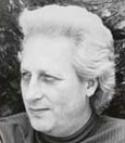For many individuals, chronic mental troubles originated in distress of the body, so the Edgar Cayce readings suggested physical measures, especially osteopathic manipulation. But this approach also took into account the whole being, not just body or mind, but body, mind, and spirit. From a trance state, Cayce examined a subject’s health and life situation and reflected patterns and symptoms that could be verified. He intervened to stop debilitating trends, but handed responsibility over to sufferers, refusing to let them become hooked on his help. He insisted on overhauling unexamined ideals. He warned against self-condemnation, yet managed to combine affirmation of one's unique worth with rebuke of unworthiness. He challenged projection and other ego defenses, and indulgence in moods, ..opinions, and appetites.
His readings were able to break down secrecy and self-deceit, quiet the terror of isolation and feeling misunderstood, perceive growth outcomes that turmoil might portend, and monitor progress. Further, he strove to raise vibrations in a healing encounter, through a spirit of prayer and respectful comradeship that built on specific archetypes. For some, he encouraged the use of “will” to get beyond self-pity, fear, and doubt and for others he confronted their misuse of will in lives of self-aggrandizement that ignored or abused others.
His major contributions to healing mental illness lay in the sources of disorder, which he traced—each implying healing strategies for combination with other measures:
1. Look to the body! He connected distraught thought, emotions, and actions to spinal injuries or distortions, together with poor coordination of the body's systems-nerves, circulation, assimilation, elimination-and to muscles and organs too tightly bound to self-interest and self-protection.
2. Look to the Spirit! Cayce's pungent phrase, "All illness is sin," requires investigation of life's animating ideal and energy, and release of the unworthy in earnest repentance. He challenged subtle idolatries, hiding, and self-contrived existence, while calling for commitments to truth, beauty, justice, love, and holiness, which might give the spinning mind direction and meaning.
3. Feed the mind with care! Cayce insisted that ''Mind is the builder," partly through the potent suggestibility of its deeper levels, both to convictions or vows and to daily stimuli of events, companions, reading, entertainment, and one's own emotions and speech. His alternative menu for the troubled mind included nature, music, meaningful work, and forgiveness.
4. Pray! He saw prayer as capable of reaching into the darkest recesses of a tortured mind, not to force an outcome but to minimize distraction from the soul's best impulses, and to strengthen the pull of healing persons and forces as "like attracts like." Healing prayer is stronger when practiced by a family or group, when formed around the presence of the Christ, and when awakened in sustained meditation.
5. Take responsibility for your own life--and lives! In saying, "We only meet self," Cayce put an end to blaming and to demands for reparations from others. He pushed the drama of mental distress past childhood interactions to entire lifetimes that could be recalled, where destructive living so branded the soul with a growth theme as to bring it back vulnerable to traumas and stresses. Each is the agent of one's own hardships and panics, with parents, spouses or bosses more mediators than culprits.
Cayce's insistence that death is but a change in consciousness addresses not only murder and suicide (including the slow suicide of addiction), but all behavior oriented to fending off death rather than embracing living. His account of obsession and possession by discarnates, or by demonic thought forms, breaks new ground.
Excerpt from the Sep-Oct 1987 issue of Venture Inward magazine.






